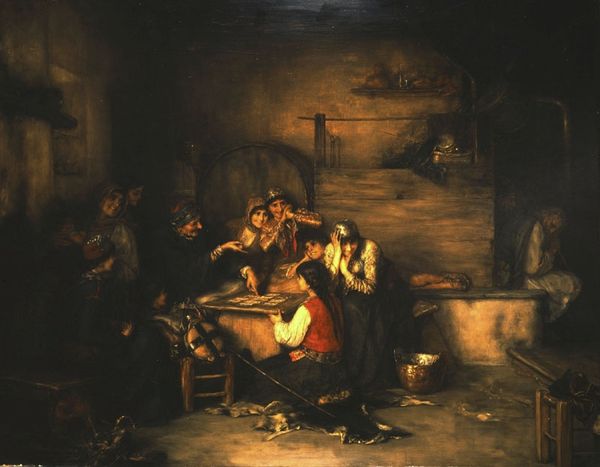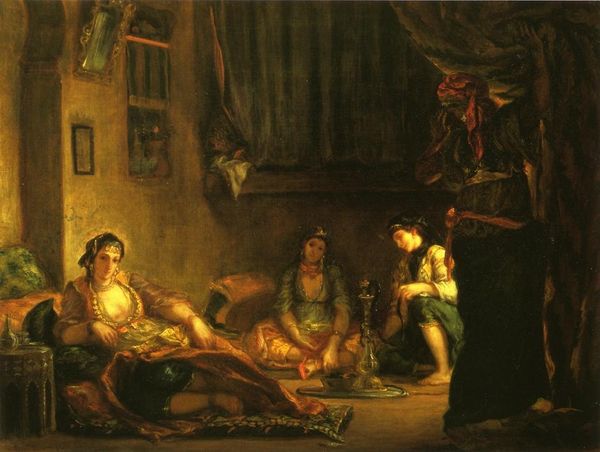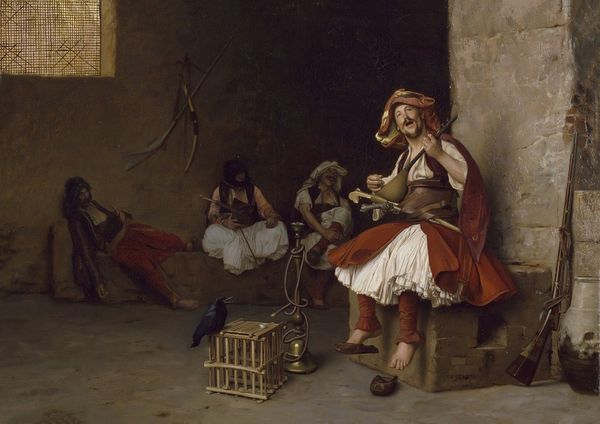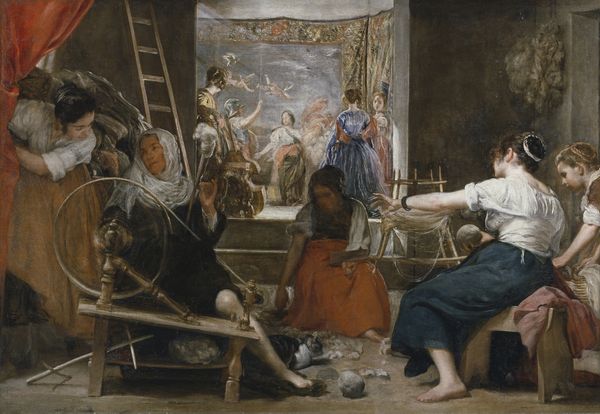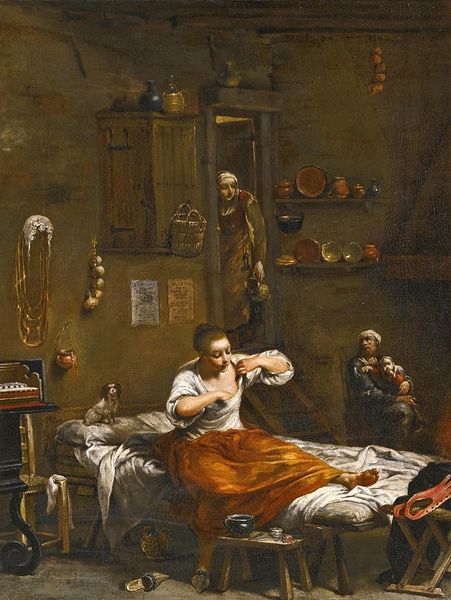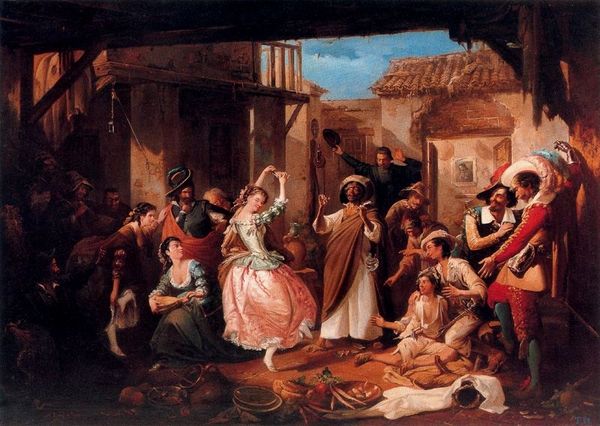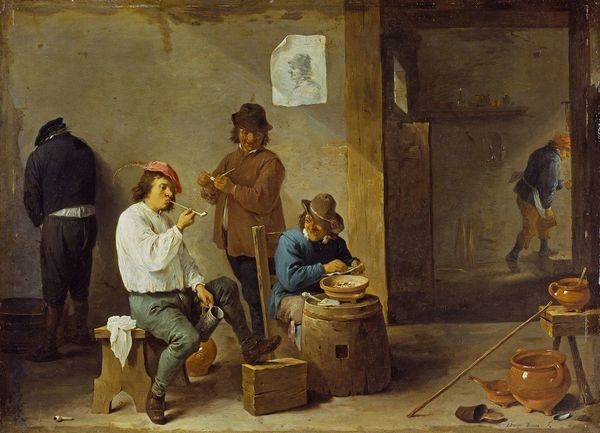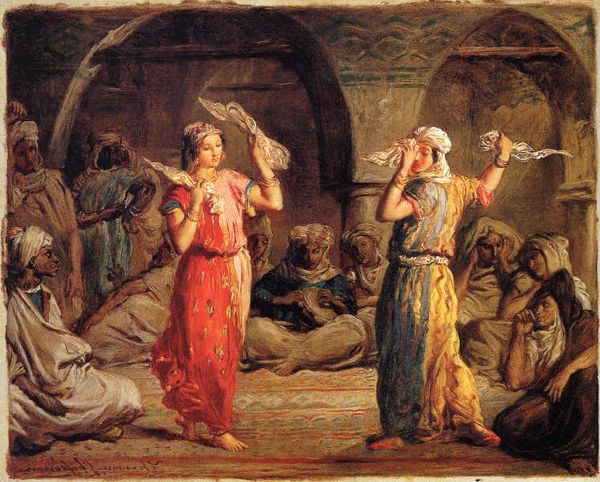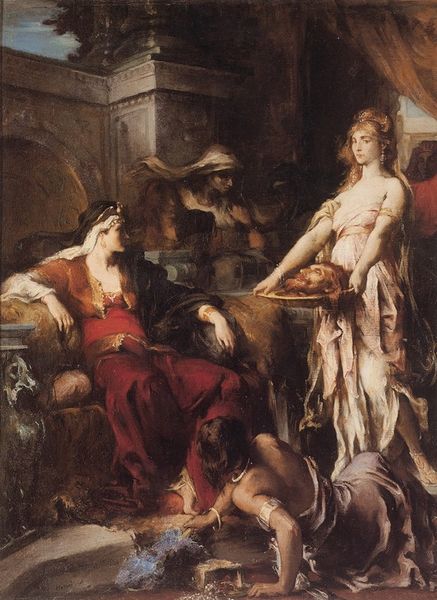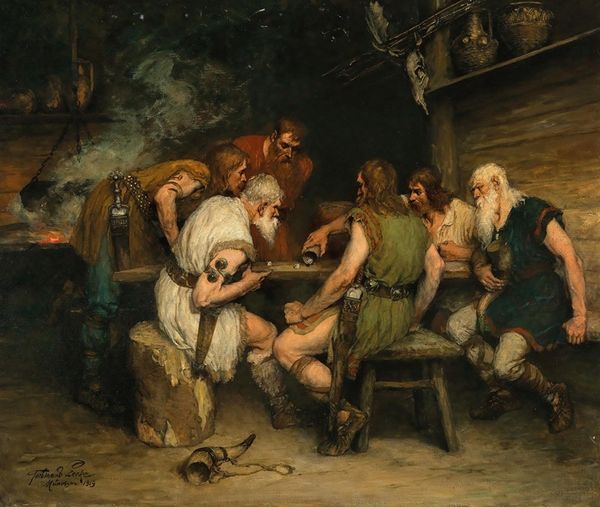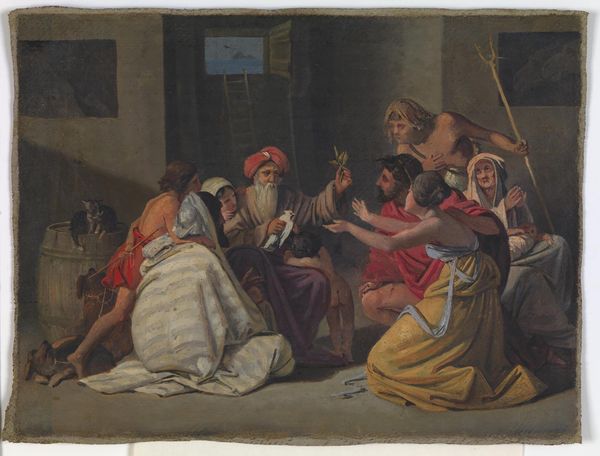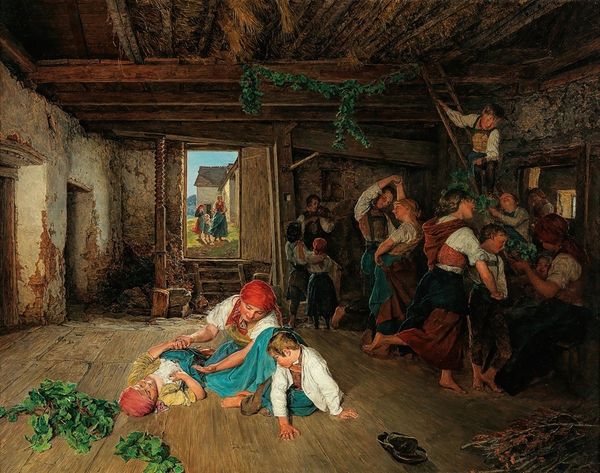
painting, oil-paint
#
portrait
#
painting
#
oil-paint
#
group-portraits
#
romanticism
#
orientalism
#
genre-painting
Dimensions: 180 x 229 cm
Copyright: Public domain
Curator: Immediately, I'm struck by the pervasive languor. It feels humid and still. Editor: Let's dive in. What we're looking at is Eugène Delacroix's "The Women of Algiers in their Apartment", an oil painting completed in 1834, now residing in the Louvre. Delacroix, a pivotal figure of the Romantic movement, painted this after a brief trip to North Africa. Curator: "Romantic" feels apt. The image shimmers with jewel tones. But is this merely aesthetic infatuation, or something deeper? What cultural narratives are we inheriting? Editor: That's the key question. This painting exists within the framework of Orientalism – a Western fantasy projected onto the East. The composition exoticizes a domestic, private space and perpetuates limited viewpoints on women’s place within Algerian society. Curator: It’s potent how the interior design—the geometric tiles and the dark woodwork, become visual markers. They carry symbolic weight of another culture to Western audiences and immediately telegraph "exotic locale". Editor: The figures, too. Notice their stillness. Are they portraits? Representations? Or embodiments of colonial expectations? Their gaze is passive, inviting the viewer into their space, which reinforces European ideals about subjugated populations. Curator: The light seems purposeful; it feels constructed to maximize the "otherness". But let’s not forget the influence this image had on artists later—particularly its exploration of color and composition, which are incredible. The play of light on the fabric alone. Editor: Absolutely. From a purely art historical perspective, its impact is undeniable. Manet and Renoir both owe a visual debt to Delacroix. But our analysis should question, and ultimately acknowledge, how this kind of romantic depiction of foreign cultures informed an often-oppressive political history. Curator: Agreed. Even now, those dynamics of power subtly continue through our inherited visual lexicons, right down to the type of scarf we think expresses 'mystery.' The symbol becomes the stereotype very easily. Editor: Indeed. Context always complicates aesthetics. Recognizing those threads connecting artistic technique to social narrative offers richer ground for viewing and understanding. Curator: This painting is still relevant today because it showcases the power art has to reflect, and perhaps distort, how different societies view one another. Editor: I concur. Delacroix's work functions as a valuable tool, challenging us to view representations through the lenses of history, power, and evolving cultural narratives.
Comments
No comments
Be the first to comment and join the conversation on the ultimate creative platform.
